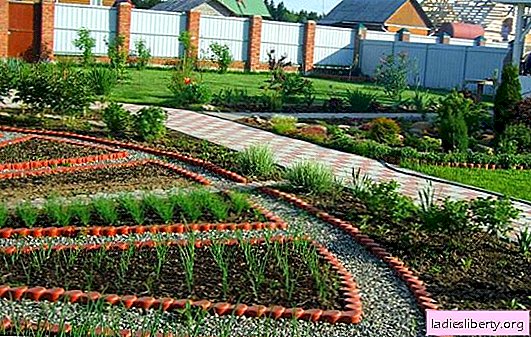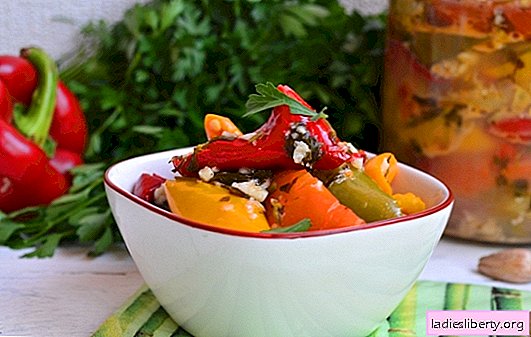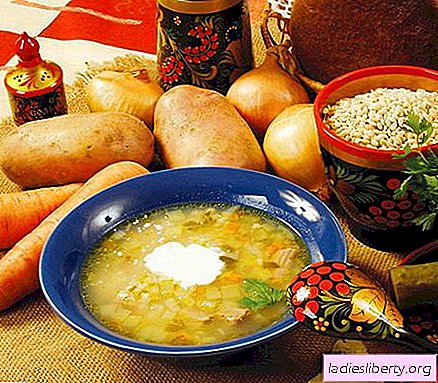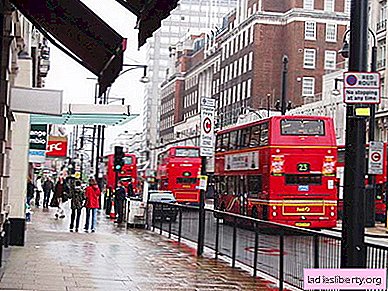
There is not much land, assured avid summer residents; there is always something to plant and grow to the table. But what about those "digging in the ground" lovers who have at their disposal only a few hundred? How to use a small plot to get the most out of it? The main thing is to remember crop rotation. Namely, that ...
CROP ROTATION
Cabbage Do not grow where in the last season there were cabbage, onions, tomatoes, zucchini, cucumbers, potatoes or peas, any cruciferous. Otherwise, the intensity and number of diseases characteristic of cabbage will increase.
Potatoes it is better not to plant in the beds where tomatoes were ripening or sunflower was rising. Plant it where there was cabbage, beans, beets, cucumbers or pumpkin.
Carrot grown on plots previously occupied by early potatoes, cucumbers, tomatoes, legumes. Before planting, to ensure uniform sowing, carrot seeds are mixed with sand (1: 5), while the sowing depth should be no more than 2 cm.
Turnip - undeservedly forgotten root crop. But he is already good because in a dry summer he can do without watering for several days. It turns out that turnip is an ideal option for those who do not live in the country, but come.
Successful turnip predecessors are potatoes, legumes, cucumbers, tomatoes. Unwanted - radish, daikon, radish, various cabbage, horseradish and watercress.
Canteen beetAs well as parsnips, parsley, celery, they "feel" great on the former tomato, cucumber and cabbage beds, as well as after legumes.
In this case, parsley is sown in the same way as carrots. And table beets are planted after carrots, because its seeds germinate the better, the warmer the ground.
Radish It will give an excellent harvest in the area where last season there were potatoes and other vegetables, except cabbage.
Radish is also sown there. Sprouted seeds are thrown into poured grooves to a depth of about 2 cm, observing a distance of 5 cm between them.
Eggplant should not be planted after eggplant, potatoes, tomatoes, bell peppers. They literally trample on the ground, where before there were cucumbers, pumpkins, watermelons or melons, cabbage, beans.
Zucchini, green salads, cucumbers, squash work best on light sandy soil. Suitable forerunners of squash and squash are beets, onions, tomatoes, eggplant, cauliflower, potatoes, rhubarb and other greens. In addition, zucchini and cucumbers are planted on plots that are earlier than others freed from snow and melt water.
Tomatoes - these vegetables are best reserved for places with a deep occurrence of subsoil water. As well as areas where a year ago you grew beets, cucumbers, carrots, beans, corn or zucchini.
Pumpkin Do not plant in an area cleared of potatoes. Give her the place that legumes, radishes or mint occupied last season.
Garlic will appreciate the soil “walking” after carrots, cucumbers and beets.
GARDEN
Now about the garden - what is the plot without fruit trees? The main principle of forming a garden is a successful selection of assortment. Seedlings are chosen so that, say, apples are in the house all year round.
The average family of 4-5 people will provide summer fruits with only two trees, one of which bears fruit a little earlier, and the other later. It can be well-known, respected by all Papirovka and White filling, as well as varieties that ripen 15-20 days later - Melba, Konfetnoe, Katya.
Two more apple trees let it be autumn. For example, Glory to the winners, James Greve, Spartan or Antonovka - the best variety for pies, lozenges and jellies.
Do not forget about winter species: find a corner for a tree of Idared variety, because the fruits of this apple tree can be consumed before the new harvest. It is also advisable to plant Golden Deliches, Mantua, Jonagold or Boyken. In the apples of the last grade there are a lot of pectins and organic acids, which makes them an ideal raw material for harvesting.
Favorites of so many - sweet, juicy pears. Plant three pear trees. For example, Lyubimitsu Klappa, Talgar beauty and Kiev winter Bere.
Universal, classic varieties drain there are Stanley, Greengage Altana, Greengage Rossoshansky and Sultan's Favorite. You can plant all of these species in one tree or choose 1-2.
Harder with sweet cherries. They often freeze in the "infant" age. Nevertheless, Godelfinger and Drogana are considered good grades; slightly inferior to them in frost resistance, Mack and Homestead.
Of cherries Choose local varieties: they are less susceptible to fruit rot than others.
Well, if there is a place left, you can also plant apple trees with the prospect of "for sale". The best tree for this purpose. than good old Idared does not exist. No wonder the Poles call it apples "dollar grade". However, both Golden Delicious and Jonagold are not bad.











